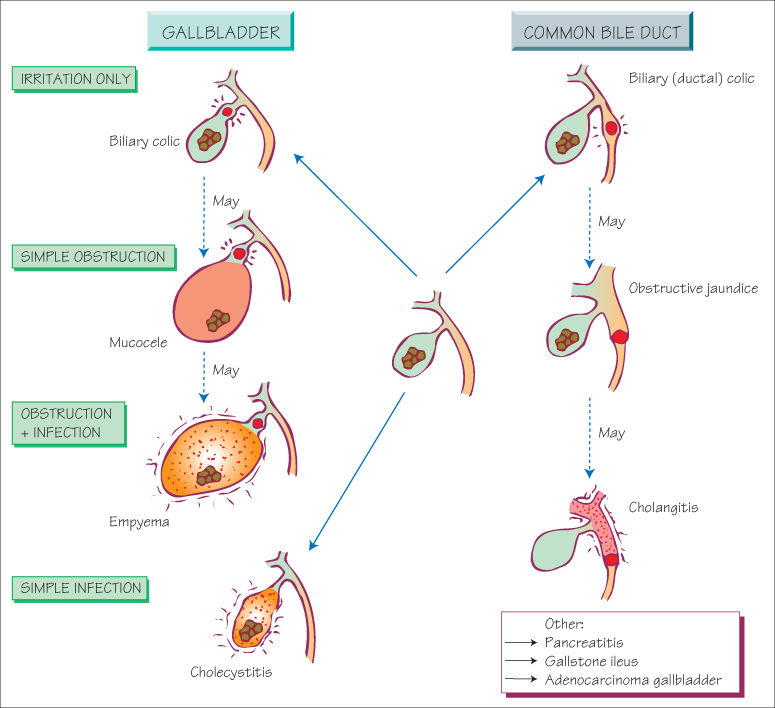Definitions
Gallstones are round, oval or faceted concretions found in the biliary tract containing cholesterol, calcium carbonate, calcium bilirubinate or a mixture of these. Microlithiasis is the presence of small/microscopic solid elements within the bile.
Key Points
- Gallstones are common, but they may not be the cause of the patient’s symptoms.
- Incidentally found asymptomatic gallstones should not be treated.
- An attack of biliary colic/cholecystitis, acute pancreatitis, cholangitis or obstructive jaundice is an indication for prophylactic cholecystectomy.
Epidemiology
Male : female 1:2. Age 40 years onwards. High incidence of mixed stones in Western world. Pigment stones more common in the East.
Pathogenesis
- Cholesterol stones: imbalance in bile between cholesterol, bile salts and phospholipids, producing lithogenic bile. May be associated with inflammatory bowel disease.
- Mixed stones: associated with anatomical abnormalities, stasis, previous surgery, previous infections.
- Bilirubinate (pigment) stones: chronic haemolysis.
- Statins and coffee consumption appear to protect against gallstone formation.
Pathology
- Gallstones passing through the biliary system can cause biliary colic or pancreatitis.
- Stone obstruction at the gallbladder neck + infection leads to cholecystitis.
- Obstruction of the CBD + infection leads to septic cholangitis.
- Migration of a large stone via biliary-enteric fistula into the gut may cause intestinal obstruction (gallstone ileus).
Clinical Features
- 90% of gallstones are (probably) asymptomatic.
- Biliary colic: severe upper abdominal pain radiating around the right costal margin ± vomiting. Often onset at night, spontaneously resolves after several hours.
- Acute cholecystitis: right hypochondrial pain, pyrexia, nausea, RUQ tenderness (positive Murphy’s sign). Leucocytosis. Unresolved may lead to an empyema of the gallbladder.
- ‘Chronic cholecystitis’: uncertain diagnosis, vague, intermittent, right upper abdominal pain, abdominal distension, flatulence, fatty food intolerance.
- Obstructive jaundice: upper abdominal pain, pale/clay-like stools, dark brown urine, pruritus. May progress to cholangitis (Charcot’s triad: abdominal pain, high fever/rigors, jaundice) if CBD remains obstructed.
- Pancreatitis (see Chapter 57): central/epigastric pain, back pain, fever, tachycardia, epigastric tenderness.
- Gallstone ileus: clinical features of small bowel obstruction. Elderly patients.
Gallstone disease/2

Stay updated, free articles. Join our Telegram channel

Full access? Get Clinical Tree


